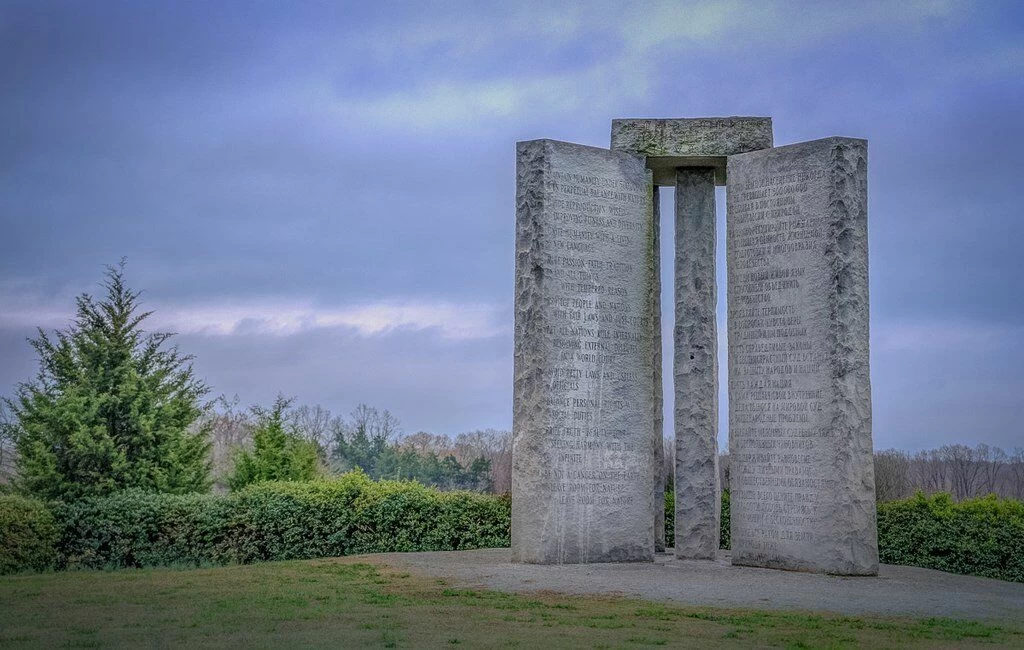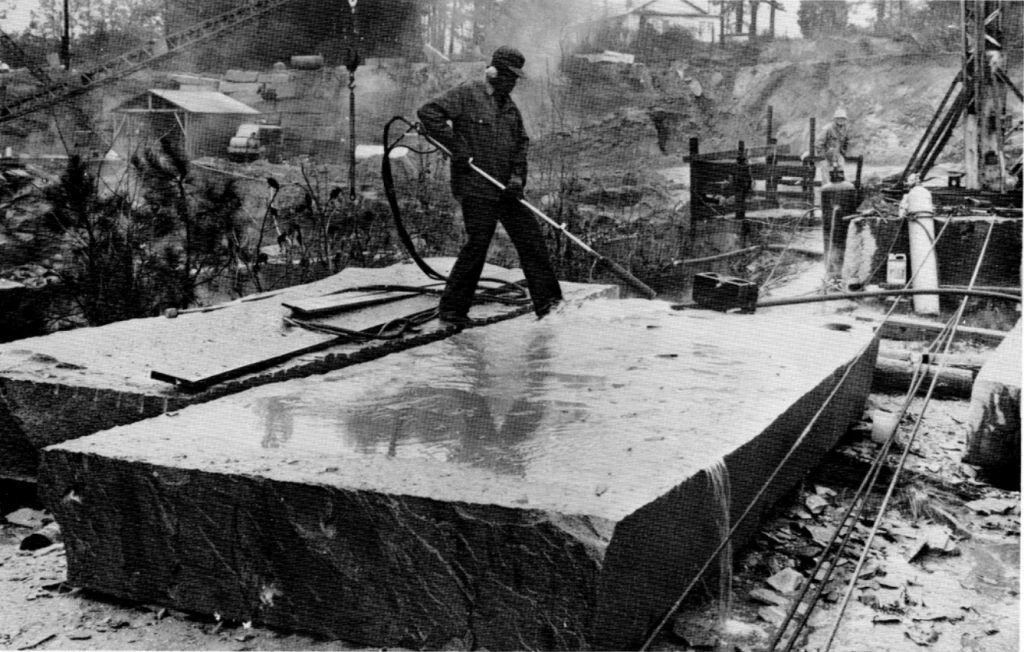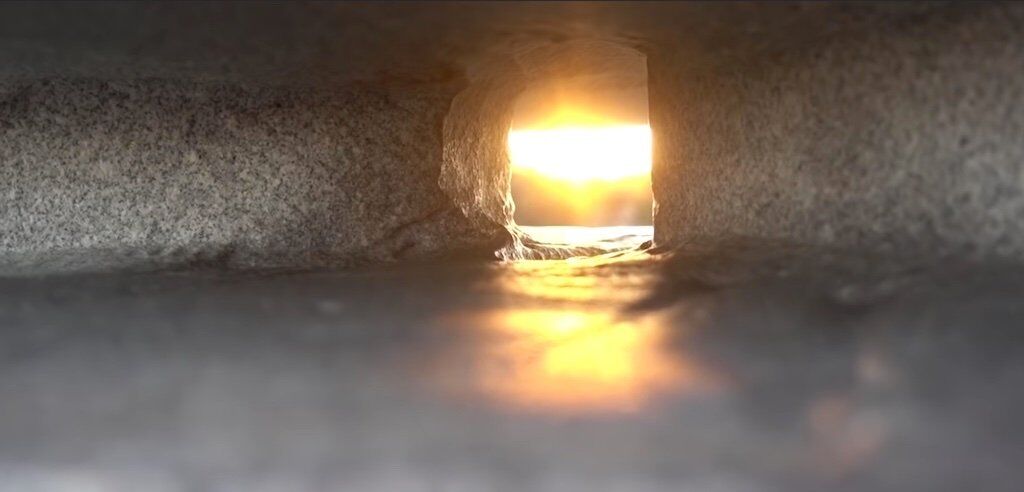The Georgia Guidestones were commissioned by a man who called himself Richard C. Christian. Richard went to the Elberton Granite Finishing Company in 1979 and said he wanted to build a monument that would send a message to mankind. When Joe Fendley, President of Elberton Granite Finishing Company, heard the scope of the project, he told Richard he needed some proof that he would be able to pay for it. Fendley could not start on such a job (the largest that the company had ever undertaken) without reassurance. So, Richard C. Christian went to the local bank.

The Georgia Guidestones. Image: Dina Eric.
The Mysterious “Richard C. Christian”
At the bank, Richard spoke with banker Wyatt Martin. He told Martin that Richard C. Christian was a pseudonym and that he and a private group had been planning the construction of the Georgia Guidestones for twenty years. They wished for the entire project to remain strictly anonymous. Wyatt later described Christian as well-dressed and well-spoken. He had no reason to believe that the man was not sane. Nonetheless, he needed to know Christian’s real name before he could conduct any transactions with him.
You May Also Like: Secrets of the Coral Castle, Florida: An Engineering Marvel
Christian agreed, but with a few conditions. After completing the transaction, the documents bearing his name must be destroyed. Wyatt must also sign a document stating he would never reveal Christian’s identity to anyone. After agreeing on these terms, Christian set about finding a location for the monument and getting all of the details sorted out.
The name of the group Christian represented was never disclosed, nor any of the identities of the parties involved.
Construction and Controversy

Cleaning and sizing the granite during the construction of the Guidestones.
Construction on the Georgia Guidestones began in 1980. Rumors that they were the work of the devil began circulating even before completion of the stone slabs etching. Communities feared the location would become some sort of pagan landmark. The rumors became worse following the completion of the monument on 22 March 1980. Some people believe that it was commissioned by the New World Order. Others believe that it sets forth the commandments of the antichrist. Others opined it contains guidelines, or advice, for survivors of the apocalypse.
Yet another belief is that followers of Thomas Paine commissioned the construction of the monument. This actually may be true, given that there are certain parallels between the guides and Paine’s, “The Age of Reason.”
Dimensions
The Georgia Guidestones consist of four tall granite slabs, a centerpiece of equal height, and a capstone that sits atop the other five stones. The four granite slabs are each 16 feet, 4 inches tall. They are 6 feet, 6 inches wide and 1 foot, 7 inches thick. They each weigh more than 20 tons. The capstone weighs roughly 25,000 pounds. They are sometimes referred to as the “American Stonehenge,” likely because of their shape and dimensions.

A still of Tom Scott’s video below shows the slit in the column capturing the sunbeam.
Purpose of the Monument
Now, the reason for all the to-do about the Georgia Guidestones is certainly the function and messages of the monument. Richard C. Christian had a few specifications he requested in the large stones. They were to be notched and have holes in them that would allow for the structure to act as a compass and calendar. The sun shines through a hole in the capstone and shows what day it is on the centerpiece every day at noon. The North Star is viewable through a slot in the center stone. There are also other ways to track the movement of the stars and sun.
These functions obviously give the monument a decidedly ancient pagan feel. However, that is not the contention of many modern Christians regarding the Georgia Guidestones. The problem appears to be the ten commandments located on the four slabs and the words on the capstone. Additionally, the capstone states “Let these be Guidestones to an age of reason” etched in classical Greek, Sanscrit, Egyptian hieroglyphs, and Babylonian cuneiform.
Georgia Guidestones Text

The stones have ten commandments, “rules,” or “guides,” depending on how you look at them. The text is in English, Swahili, Hebrew, Spanish, Russian, Arabic, Chinese, and Hindi. The text in English states the following:
- Maintain humanity under 500,000,000 in perpetual balance with nature.
- Guide reproduction wisely-improving fitness and diversity.
- Unite humanity with a living language.
- Rule passion-faith-tradition-and all things with tempered reason.
- Protect people and nations with fair laws and courts.
- Let all nations rule internally resolving external disputes in a world court.
- Avoid petty laws and useless officials.
- Balance personal rights with social duties.
- Prize truth-beauty-love-seeking harmony with the infinite.
- Be not a cancer on the earth-Leave room for nature-Leave room for nature.
The meaning of the Georgia Guidestones is relatively clear. A group of people wanted to set forth their beliefs on a monument that could be viewed by the rest of humanity. It is obvious that their hope is that these beliefs are viewable for quite some time. This is actually a quite common practice and not mysterious in and of itself. However, not knowing whose beliefs they are, makes quite a few people uneasy.
Are they simply ideals that these people hoped the world would understand and someday abide by? Do these people hope it will help guide humanity after an apocalypse? Or, are they the commandments of the antichrist or the beliefs of the New World Order? We may never know. The only man who knows the identity of the individual connected to the financing of the monument has sworn to carry his secret to the grave.
Additional Resource: Archived PDF file on the history of the project.